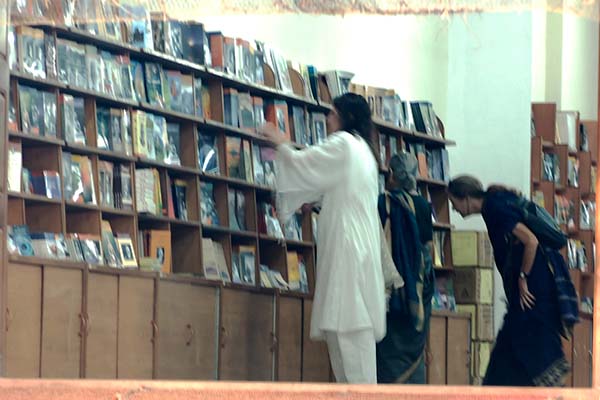encounters with reformist Hindu movements
Summary of contents
The document is a summary of a scholarly study conducted by Italozazen on various Yoga schools in India from 1993 to 2005 and 2018/18. The study aimed to understand the different pedagogical and philosophical aspects of each institution. Italozazen’s personal experience as a practitioner of Yoga in the 1980s added authenticity to his research. In 1996, he focused on Hatha Yoga in Pune and contributed to the Osho International Meditation Sanctuary. He studied under a renowned teacher in the Iyengar tradition, emphasizing physicality and alignment. The research aimed to explore Yoga as both a practice and an art form that transcends boundaries. The summary also mentions ongoing research into yoga resorts.
The main objectives of Italozazen’s scholarly study on Yoga schools in India were to understand the diverse manifestations of Yoga, compare the pedagogical and philosophical nuances of different institutions, and explore the interplay between tradition and personal experience in the practice of Yoga. Italozazen’s research aimed to provide a comprehensive analysis of various Yoga schools and their impact on individuals’ well-being.
In the 1980s, Mr. Italozazen had a personal experience as a Yoga practitioner. He explored the world of Hatha yoga, focusing on asanas (postures). This experience provided him with insight into the popular conception of yoga and its benefits for health and well-being. Inversions and backbends became favored postures in his own practice. He also practiced Osho’s meditative practices and Raja yoga as taught by the Brahma Kumaris. This exploration of different yogic traditions enriched his understanding of the practice and its diverse forms.
Italozazen chose to study Hatha Yoga in Pune because it is a city known for its association with the disciplined practice of Iyengar yoga. He was particularly interested in exploring the deeper confluence of yoga’s varied schools of thought and wanted to delve into the rich tapestry of yogic traditions. Contributing to the Osho International Meditation Sanctuary allowed him to impart techniques in sound therapy utilizing hollow wood from Australia, which was an innovative synthesis of traditional and new age therapeutic practices. This aligns with his philosophical and eclectic approach to yoga, where he sought to explore it not just as a practice but as an expansive, living art form that transcends boundaries and definitions.
Yoga research throughout the sub continent
In the scholarly pursuit of understanding the multifarious manifestations of Yoga, Mr. Italozazen embarked upon an empirical odyssey from 1993 to 2005 and 2017/18, traversing the Indian subcontinent’s diverse array of Yoga schools. His methodological framework was inherently relativistic, designed to juxtapose the pedagogical and philosophical nuances of each institution in a comparative analysis. This rigorous inquiry was not merely academic; it was deeply rooted in Mr. Italozazen’s intrinsic fascination with new age movements and substantiated by his immersive experience as an adherent of a singular Yoga school in the 1980s. This personal engagement lends a unique authenticity to his research, bridging the subjective and the scholarly, and thus validating the research through the lens of an experienced practitioner turned astute observer.
In the year 1996, Mr. Italozazen’s exploratory journey through the rich cultural tapestry of India led him to Pune, in the vicinity of the metropolis then known as Bombay. It was here that he deepened his engagement with the discipline of Yoga, particularly Hatha Yoga, known for its emphasis on asanas or postures. His pedagogical pursuits were further enriched by his unique contribution to the Osho International Meditation Sanctuary, where he imparted techniques in sound therapy utilizing hollow wood from Australia, an innovative synthesis of traditional and new age therapeutic practices.
Mr. Italozazen’s scholarly endeavors in Hatha Yoga were under the tutelage of a renowned teacher in the Iyengar tradition, a lineage distinguished by its meticulous attention to alignment and anatomical detail. This choice reflects a deliberate immersion into the physicality of Yoga as an art form, a gallery of poses that are both a discipline and a dialogue with the body. Concurrently, his interest in the existential aspirations of the East, as epitomized by the Osho movement, underscores a philosophical and eclectic approach to Yoga. This juxtaposition of the physical with the existential, the traditional with the innovative, encapsulates Mr. Italozazen’s aspirations to explore Yoga not merely as a practice but as an expansive, living art form that transcends boundaries and definitions.
Research into yoga resorts
In the verdant embrace of the Osho International Meditation Resort, one finds not the ascetic rigors of traditional Hatha Yoga nor the cloistered serenity of an ashram, but rather a sanctuary that resonates with echoes of Mr. Italozazen’s yogic explorations of the 1980s. Here, the meditative practices transcend conventional physicality, advocating for a state of ‘bodilessness’—a concept that might be likened to the ethereal freedom of a leaf dancing on the wind, yet fully aware of every gust that propels it. This philosophy offers a refreshing reinterpretation of the classical yogic tenet of sensory withdrawal, suggesting a liberation that is both within and beyond the senses.
Moreover, the resort’s tapestry is woven with vibrant threads of creative arts, reflecting a modern zeitgeist that Osho, with his philosophical acumen, infused into the meditation techniques. These practices are not isolated rituals but are interlaced with the dynamic discourse of global politics and the human condition, a testament to Osho’s legacy as a scholar.
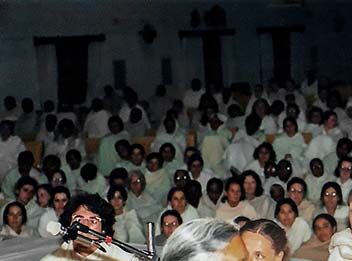
Venturing into the realm of the Brahma Kumaris, one encounters a different facet of the yogic spectrum at Mount Abu’s ‘forest of honey’—a moniker that evokes the sweetness of spiritual retreat. This environment, with its pristine white attire and architecture, communal convocations, and the pursuit of transcendental experiences, conjures an image that aligns with Western idyllic fantasies. Yet, it is a place that eschews the mundane for the mystical, offering a departure from the ‘iron cage’ of modern existence.
The Brahma Kumaris present a more defined philosophical architecture, one that is not so much a spectrum of grays but a clear delineation of black and white truths. Their teachings craft a narrative of belief that serves as the foundation for an ‘imagined community,’ united in the collective vision of a utopian golden age. This is not a mere holiday destination but a pilgrimage to the heart of a community’s shared ethos, a journey that Mr. Italozazen, with his rich tapestry of experiences, can appreciate both as an artist and a seeker.
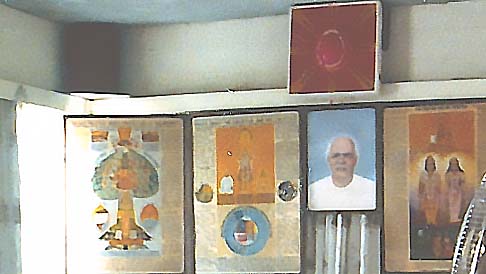
A focus on Hatha yoga research 1996
In the verdant expanse of Pune, a city that has become synonymous with the disciplined practice of Iyengar yoga, one finds a confluence of tradition and transformation. Here, the meticulous alignment and precision of Iyengar’s teachings are imparted with a reverence that borders on the spiritual. It was within this backdrop that the teacher Rashnu, a figure who straddled the worlds of the Osho Sannyasin movement and the rigorous discipline of Iyengar yoga, emerged as a conduit between the two seemingly disparate realms. His dual allegiance served as a bridge, connecting the free-flowing spontaneity of Osho’s dynamic meditations with the structured and methodical approach of Iyengar yoga.
Rashnu’s journey, emblematic of a grander quest, was not merely to teach asanas but to explore the deeper confluence of yoga’s varied schools of thought. This quest mirrored a larger narrative, one that Mr. Italozazen, as a researcher and practitioner, was keen to delve into. The two-month intensive training undertaken by Mr. Italozazen was not just a physical endeavor but a photographic odyssey as well, capturing the interplay of body and prop, the tangible and the ephemeral, resulting in a series of photographs that serve as biographical landmarks on this journey of discovery.
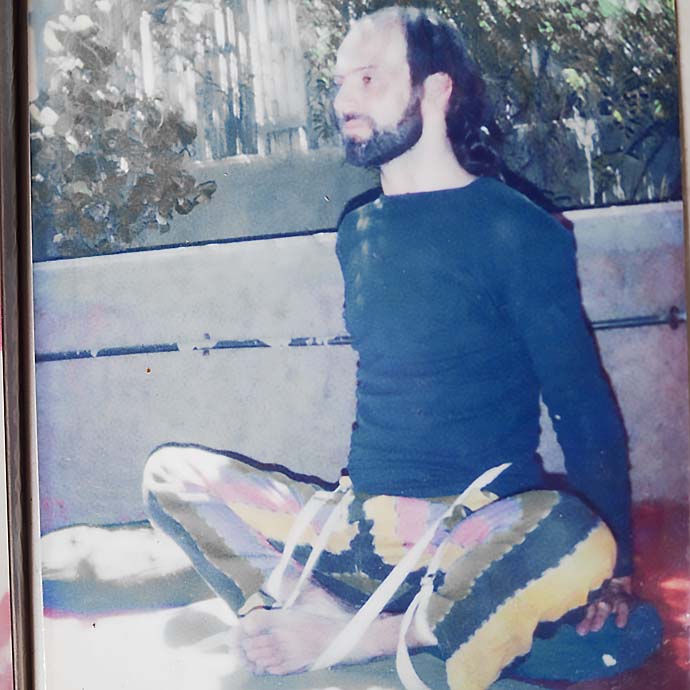
The initial foray into the world of Hatha yoga, with its emphasis on asanas, provided Mr. Italozazen with a tangible insight into the popular conception of yoga, a conception that often belies the depth and diversity of its practice worldwide. The experience was more than an academic exercise; it became a personal testament to the enduring benefits of yoga for health and well-being, with inversions and backbends emerging as favored postures in Mr. Italozazen’s own practice. The precision and discipline of the Iyengar style stood in stark contrast not only to the fluidity of Osho’s meditative practices but also to the introspective and subtle realms of Raja yoga as taught by the Brahma Kumaris, highlighting the rich tapestry of yogic traditions that Mr. Italozazen has woven into his life’s fabric.
In this exploration, Mr. Italozazen’s approach is that of a social scientist, dissecting and discerning the layers of yoga’s global appeal, its adaptation, and its return to the roots of personal well-being. His journey through the world of yoga is reflective of a broader philosophical inquiry, one that seeks to understand the interplay between tradition and personal experience, between the global and the individual, and ultimately, between the body and the spirit.
The yoga of Ramana Maharshi
The authentic South Indian saint is an archetype steeped in the renunciation of material pursuits for the sake of spiritual liberation, often embodying a life of asceticism and contemplation. In this context, Ramana Maharshi stands as a paragon, his very existence a testament to the pursuit of self-realization. His ashram, nestled at the foot of the sacred Arunachala, became a beacon for those seeking the essence of Advaita Vedanta, the non-dualistic understanding that the self is not separate from the divine.
Ramana Maharshi’s approach to spirituality was not one of proselytization or millenarian urgency. Instead, his was the path of negation—neti, neti, “not this, not that”—a positive negation that stripped away the illusory layers of the ego to reveal the Atman, the soul identical with Brahman, the ultimate reality. This negation was not a denial of the world’s richness but an affirmation of a more profound truth, a visionary inward journey that transcended the conventional boundaries of political and social community.
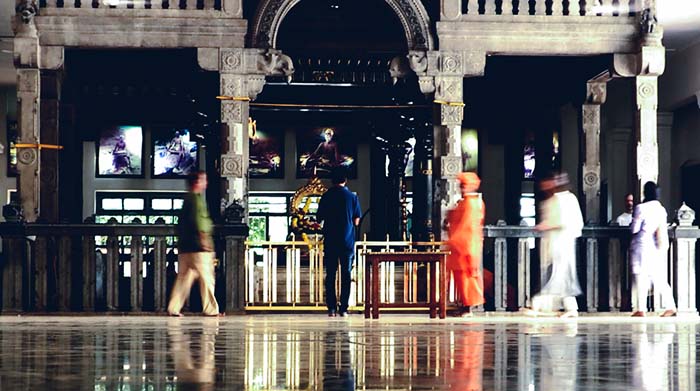
In 2005, Mr. Italozazen’s odyssey to the spiritual nucleus of Arunachala not only immersed him in the enduring legacy of Ramana Maharshi but also wove him into the fabric of lives similarly touched by the quest for enlightenment. It was here, amidst the thrum of seekers and the quietude of the Maharshi’s teachings, that serendipity led Mr. Italozazen to cross paths with an American sadhu—a former high school teacher who, three decades prior, had cast off the mantle of Western life to don the ochre robes of renunciation. This Western sadhu, with his feet dusted by the soils of the subcontinent and his soul imprinted with the wisdom of its sages, shared with Mr. Italozazen not just tales of wanderings but also the profound silence that words could not encapsulate.
As the sun dipped below the horizon, painting Arunachala’s peaks with a palette of fiery hues, Mr. Italozazen found himself amidst spontaneous music sessions at a local café, a conclave where Western devotees congregated. They were a small cohort, drawn from disparate corners of the globe, yet united in their spiritual sojourn. With the strum of a guitar, the melody of a flute, and the rhythmic heartbeat of a drum, they created an impromptu symphony that seemed to echo the inner music of the soul—a celebration of the divine that transcended language and culture. These devotees, who lingered in the region for month-long retreats, would daily visit Ramana’s samadhi, seeking to imbibe the silent, potent energy that still vibrated through the ashram grounds. For Mr. Italozazen, these experiences were not mere anecdotes to be chronicled but were the living, breathing moments of connection that shaped his understanding of the spiritual tapestry of India—a tapestry in which he was now indelibly interlaced.
Under the luminous glow of a full moon, a time when the veil between the mundane and the sacred seems thinnest, Mr. Italozazen found himself amidst a sea of devotion, accompanying the Western sadhu on a sacred pilgrimage around the base of Arunachala. This was a rite steeped in antiquity, a circumambulation known as ‘Girivalam,’ undertaken by multitudes of Hindu devotees who sought blessings, solace, and enlightenment. The sadhu, a figure of quietude amidst the fervor, moved with a measured tread, his feet caressing the ancient soils, his presence a bridge between the seekers and the sought.
The journey around the holy mount was a tapestry of human faith in motion, a collective endeavor that spanned many hours, transcending the passage of time. As the night deepened, the throng’s chants and prayers became a rhythmic heartbeat, pulsating through the darkness, guiding Mr. Italozazen in a dance of shadow and light. Eventually, weariness draped itself over him like a blanket, and he sought refuge within the grand stone walls of the temple in the city of Tiruvannamalai.
There, in the temple’s vast embrace, Mr. Italozazen surrendered to sleep, his body nestled upon the cool, sanctified stone. Dawn’s tender fingers brushed the horizon as he stirred from his slumber, only to discover that he had been sleeping in the very space reserved for the temple’s elephant—a gentle giant revered as a living embodiment of the divine. This elephant, who by day bestowed blessings with a grace-filled touch of its trunk, was now approaching the very spot where Mr. Italozazen lay awakening.
In this moment, the profound silence that the Western sadhu had shared with him found its echo. It was not just in the absence of sound but in the presence of the sacred; it was in the communion with the elephant, a creature that carried the weight of divinity in its very being. This encounter, at the break of day, was a silent benediction, a wordless transmission of wisdom, and a poignant reminder of the unity of all life—a truth that the sadhu had lived and that Mr. Italozazen now experienced in the most unexpected of sanctuaries.
The locale resonated with the vibrancy of South India’s spiritual heart, reminiscent in many ways of Rishikesh, the North Indian counterpart known for its own tapestry of ashrams and seekers. Both places, though geographically distant, shared a common thread in the fabric of Indian spirituality: they were magnets for pilgrims and Westerners alike, many of whom were heirs to the 1960s counterculture’s quest for enlightenment, seeking to attain a rarefied state of consciousness.
The contrast between the two locales is as much a study in the geography of spirituality as it is a reflection of the Western seeker’s inner landscape. Rishikesh, with its Ganges River and Himalayan backdrop, offers a different flavor of sanctity, one that is more aligned with the yogic practices that have captured the Western imagination. Ramana Maharshi’s Arunachala, by contrast, is a silent testament to the power of stillness and the inward gaze. The Maharshi’s silent teachings resonate with the timeless call of the Upanishads, which assert the unity of the individual soul with the cosmos.
For Mr. Italozazen, the journey between these two poles of Indian spirituality is not merely a physical traversal but a passage through the variegated landscape of the self, where each location serves as a mirror reflecting the myriad facets of the quest for the divine. The Maharshi’s legacy, with its emphasis on the inner revolution of self-inquiry, offers a counterpoint to the more externally focused practices found in Rishikesh, yet both are integral to the Western seeker’s pilgrimage—a journey that continues to evolve, echoing the perennial philosophy that underpins Mr. Italozazen’s own syncretic artistry.
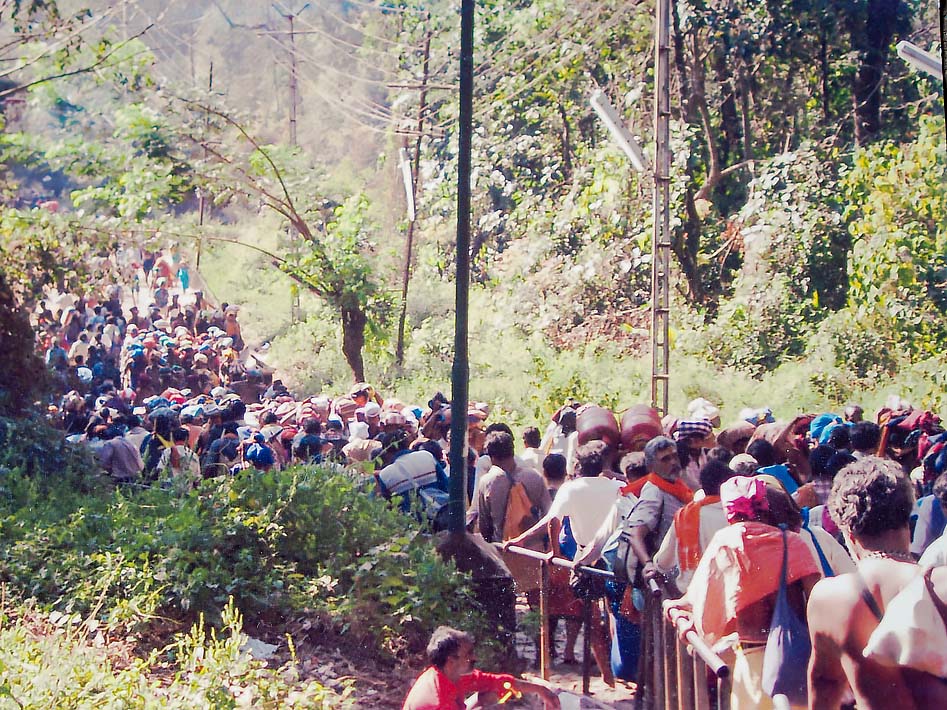
Auroville and Aurobindo
Sri Aurobindo’s core philosophy is a complex tapestry that weaves together elements of evolutionary spirituality, integral yoga, and a vision of human progress that transcends the limitations of our current mental consciousness. His quote, “As Nature has evolved beyond matter and manifested life, so too life has manifested mind. She must evolve beyond mind towards a supramental truth consciousness,” encapsulates his belief in a forthcoming stage of evolution. This stage is not merely biological but spiritual, where humanity will ascend to a ‘supramental’ level of existence characterized by a consciousness that surpasses the intellect and embraces a truth-consciousness—an awareness of the divine reality that underpins and interconnects all of existence.
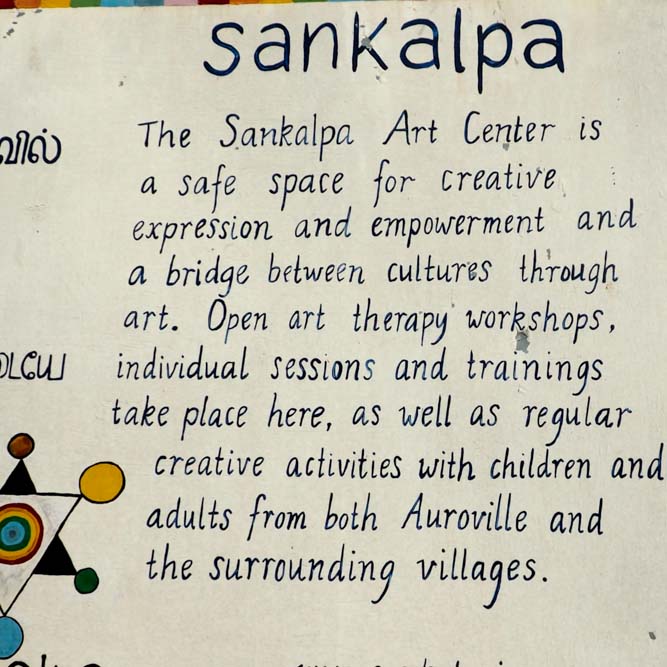
Auroville, envisioned as a ‘universal town’ where men and women of all countries could live in peace and progressive harmony, is a living experiment inspired by Aurobindo’s vision. It is often considered a new age community because it embodies the aspirations of a new consciousness, one that is not bound by the strictures of traditional nation-states or societal norms. Instead, it is a crucible for the synthesis of spirituality and practical living, aiming to explore the potential of human unity and the divine purpose of life on Earth.
From a reformist Hindu perspective, Auroville represents a microcosm of international relations. It is a place where the spiritual seeking inherent in Hindu philosophy—particularly the reformist movements that emphasize personal spiritual experience over ritualistic practice—meets the globalized world. It is a testament to the possibility of a society based on the principles of peace, sustainability, and shared human aspiration, which are key tenets of Sri Aurobindo’s teachings and of the broader reformist Hindu dialogue.
The educated Indians who visit Auroville are often drawn by its international presence and its integration of traditional Indian practices with emerging technologies. They see in Auroville a model for development that honors the past while innovating for the future—a model that aligns with the nation’s own aspirations to be a leader in technology and sustainable living. Auroville thus stands as a beacon of India’s potential on the world stage, reflecting the country’s unique ability to bridge ancient wisdom with modern progress, an endeavor that resonates deeply in the tapestry of Mr. Italozazen’s life, where the threads of Auroville and Mahabalipuram are interwoven with the rich hues of introspection and creation. His pilgrimages between the two locales, in the years 2005 and then a dozen years thence in 2017, are chapters in a larger narrative of artistic and spiritual evolution. Auroville, with its golden dome—a symbol of human unity and divine consciousness—stood as a testament to the fruition of a collective dream, one that Mr. Italozazen witnessed reaching its zenith upon his return. This dome, a gilded sphere named Matrimandir, witnessed the silent footsteps of seekers and the quiet dedication of artisans, mirroring Mr. Italozazen’s own journey of synthesis, where art is not merely an expression but a form of worship and a quest for the supramental.
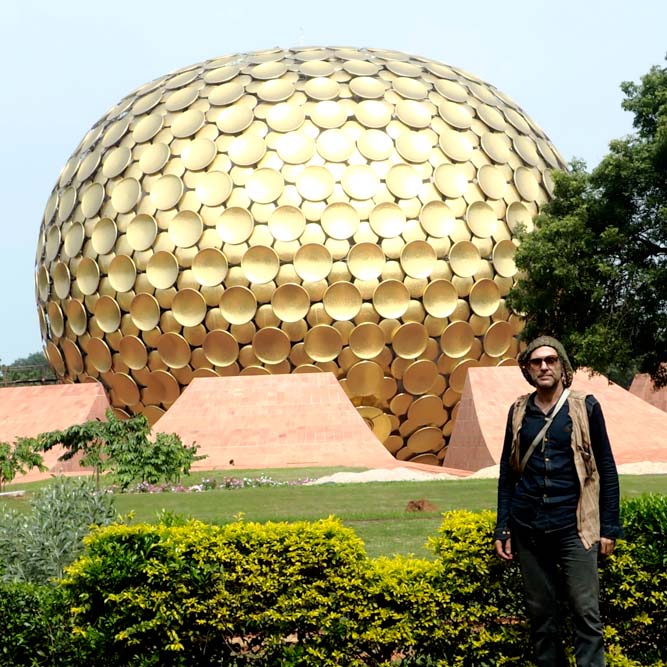
The interludes at Mahabalipuram offered a contrasting solace, where the chisel and stone spoke of eternity and the ocean whispered tales of the transient. Here, in the retreat’s quietude, Mr. Italozazen’s thoughts and works melded the temporal with the timeless, the personal with the universal. The ancient carvings of deities and myths amidst the town’s temples stood as silent sentinels to his own creative process, inspiring a dialogue between the churning of the sea and the stillness of the spirit. The completion of Auroville’s golden dome during his latter visit was not just a milestone for the community but a personal emblem of the cyclical nature of time and the ongoing dance of creation and completion that defines Mr. Italozazen’s life and work.
Yoga devotion for international tastes.
In the tapestry of contemporary Hindu practice, the vibrant threads of Bhakti weave a narrative that is both ancient and perpetually renewed. The Bhaktimarga, a path saturated with devotion and worship, finds its modern adherents in throngs within temple walls, before vividly carved deities, and in the midst of spirited festivals. It is here, in these acts of veneration, that the Western seeker often finds a conduit for their yearning, channeling their devotion predominantly through the love for a guru—a figure embodying the divine’s accessible form.
The teachings of Bhakti schools resonate with a profound simplicity: the utterance of the Divine Name as a vessel for salvation. This tenet, a cornerstone of faith, suggests that within the syllables of the sacred, there lies a transformative power, an elixir for the soul’s liberation, accessible to all who invoke it with sincerity.
At the heart of Bhakti throbs the act of prapatti, the surrender of the self in its entirety. This surrender unfolds in a quintet of movements: the intention to submit to the Lord, the relinquishment of resistance, the trust in divine protection, the plea for salvation, and the acute awareness of one’s own helplessness without the grace of the divine.
It was within this context that Mata Amritanandamayi, affectionately known as Amma, emerged as a beacon for those on the Bhaktimarga. Mr. Italozazen’s pilgrimage to her abode in 1996, to the humble fishing village of Kollam, was a foray into the heart of this devotional whirlwind. The ashram, a labyrinthine structure nestled amidst the whispering coconut palms and the simplicity of village life, offered a stark contrast to the austere spirituality of the North.
Here, the Western devotees, drawn by the magnetic pull of Amma’s presence, found a palpable energy—a hive of spiritual seekers, each clamoring for a moment of transcendence through the grace of the ‘hugging mother.’ To speak her name, as the devotees professed, was to taste an intoxicating bliss, a closeness to the divine mother that was as intoxicating as it was transformative.
The Amritapuri Ashram, with its rambling expanses and laid-back ethos, was a microcosm of South Indian ashram life, a place where the sacred and the social intertwined, where the echoes of ancient Bhakti found a new resonance. For Mr. Italozazen, this encounter was not merely a visitation but a dialogue with the divine, a moment of surrender to the fivefold path of prapatti, where the name of Amma became a mantra of salvation, a testament to the enduring power of love and surrender in the journey of the spirit.
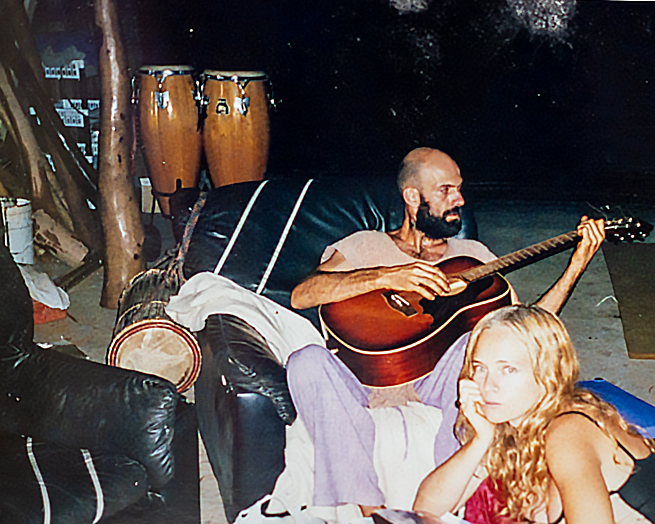
Peripheral yoga schools
In the variegated landscape of Indian spirituality, the schools of Vedanta stand as towering edifices, each offering a distinct perspective on the nature of reality and the path to liberation. The Advaita-Vedanta, with its monistic view, proclaims the non-duality of Atman and Brahman, the individual soul and the universal essence. Visistadvaita-Vedanta, in contrast, posits a qualified non-duality, a singular divine reality that manifests in the plurality of existence. Dvaita-Vedanta, with its dualistic approach, maintains a clear distinction between the individual soul and the supreme being.
These philosophical schools provide a framework within which the more esoteric forms of yogic practice can be understood—practices that remain somewhat enigmatic to the Western conception of Yoga, yet are intimately familiar to the Indian devotee. The Kumbh Mela, that grand confluence of the devout, offers a living tableau of these diverse yogic paths.
Mr. Italozazen’s sojourn to the Kumbh Mela in 1989 at Allahabad, and later at Ujjain, whose date wavers in memory between 1992 and 1993, was a profound immersion into the heart of India’s ascetic traditions. Here, the Naga Babas, ascetics who are often perceived as the very embodiment of Yoga’s ancient heritage, live in accordance with the tenets of their respective schools, be it Advaita, Visistadvaita, or Dvaita. These holy men, some solitary, others in groups, are not purveyors of lessons as one might find in conventional ashrams. Instead, they offer a silent testimony to the pursuit of enlightenment, welcoming the sincere seeker to sit by their sacred fires and partake in the offerings of illumination.
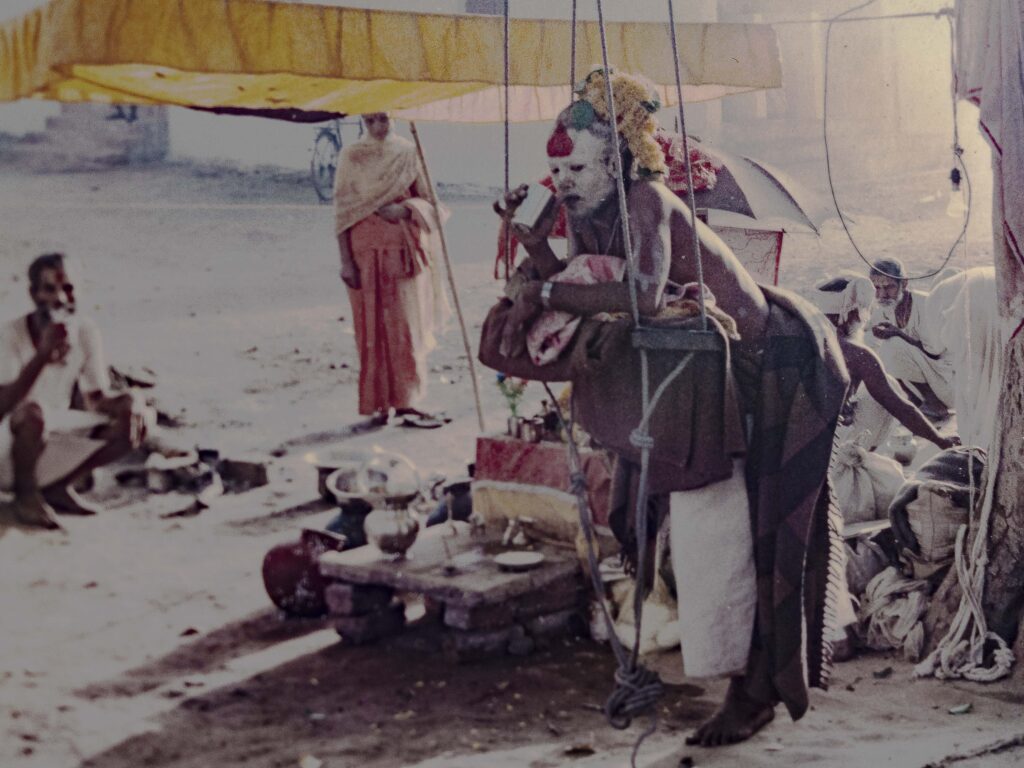
For Mr. Italozazen, the Maha Kumbh Mela at Allahabad was a spiritual awakening, a pivotal moment that allowed him to transcend the cloistered confines of the Brahma Kumaris, with whom he had been affiliated since his initiation into their Raja Yoga course in 1983 on the Gold Coast. His representation of the BK movement at the Kumbh Mela, stationed within their expansive canvas enclave, served as a gateway to the multifaceted expanse of Hinduism.
The spiritual odyssey of Mr. Italozazen, marked by a quest for the essence of consciousness and the ultimate nature of reality, found a significant juncture at the Maha Kumbh Mela. This congregation, a mosaic of spiritual paths, served as a crucible for his transformative experience. It was here, amidst the fervor and devotion, that Mr. Italozazen’s journey took a turn towards the profound teachings of the Ramakrishna Mission, an institution embodying the spirit of its founder, Swami Vivekananda.
Swami Vivekananda, a paragon of spiritual synthesis, introduced the West to the depths of Indian spirituality and was instrumental in the global spread of Vedanta and Yoga. His legacy, carried forth by the Ramakrishna Mission, provides a living testament to the principles of Advaita Vedanta, which posits the non-dualistic oneness of the individual soul (Atman) with the ultimate reality (Brahman).
Encountering a mystical devotee of Kali within the Mission’s fold, Mr. Italozazen was struck by the palpable intensity of their devotion. Kali, the Divine Mother, fierce yet nurturing, became a symbol of the ultimate reality that Advaita Vedanta speaks of—a reality beyond form and name, transcending the dualities that pervade human perception.
This encounter inspired a deep inquiry into Advaita Vedanta, which stood in stark contrast to the BK’s theory of mind-body dualism, or extreme Dvaita. The BK philosophy, with its emphasis on the separation of the soul from the material world, had provided a foundation for Mr. Italozazen’s initial spiritual pursuits. However, the non-dualistic approach of Advaita Vedanta offered a different lens through which to view the self and the universe—an interconnected reality where the distinction between the observer and the observed dissolves into a seamless whole.
For Mr. Italozazen, the Maha Kumbh Mela was not merely an event but a portal to a deeper understanding of the self and the cosmos. It was a departure from the dualistic confines into the expansive embrace of non-duality, where the dance of Kali, the embrace of the guru, and the silent resonance of the Atman within all became harmonious expressions of the same infinite Brahman. This awakening was not an end but a beginning, an invitation to explore the boundless realms of spirit and self with the heart of a seeker and the mind of a philosopher.
The stark contrast between the structured teachings at the BK headquarters in Madhuban, which he frequented annually since 1984, and the vibrant, eclectic spirituality of the Kumbh Mela, spurred Mr. Italozazen to delve into the broader corpus of Hindu literature. This exploration marked a significant turning point, a broadening of horizons that enriched his understanding of the yogic path and the myriad forms it could take—a journey reflective of the very essence of Dvaita, where the soul, in its quest for the divine, encounters a profound diversity of experiences and insights.
